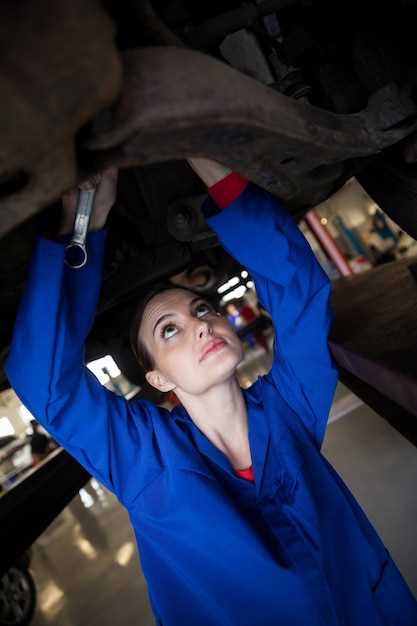
The ABS (Anti-lock Braking System) in your VW Corrado plays a crucial role in ensuring vehicle safety by preventing wheel lock-up during braking. However, like all electronics, the ABS system can encounter problems that affect its performance and reliability. Familiarity with common issues and their solutions can save time and money, making car maintenance simpler for enthusiasts and casual drivers alike.
Understanding the intricacies of the ABS system is essential when addressing issues that arise. Many factors can contribute to ABS malfunctions, including faulty sensors, wiring problems, or even issues with the control unit. Attention to detail and a systematic approach can help you pinpoint the root cause of the problem quickly, allowing you to implement effective solutions.
This guide aims to provide straightforward methods for diagnosing and fixing ABS-related problems specifically for the VW Corrado. By focusing on the common electronic issues that may arise within the ABS system, you can ensure that your vehicle remains safe and reliable on the road. Whether you’re a seasoned mechanic or a novice car owner, these tips will help you address ABS concerns efficiently.
Identifying Common ABS Warning Signs in Your VW Corrado
Being aware of the ABS warning signs in your VW Corrado is crucial for ensuring your safety and maintaining optimal performance of the brake system. The Anti-lock Braking System (ABS) plays a vital role in preventing wheel lockup during sudden braking, and its malfunction can lead to dangerous situations.
One of the first indicators of ABS issues is the illumination of the ABS warning light on the dashboard. If this light activates while driving, it typically means the electronics controlling the system have detected a fault. It’s essential to address this warning immediately by checking the brake fluid levels and ensuring the appropriate sensors are functioning correctly.
Another common sign is a pulsating brake pedal during braking. If you experience this sensation, particularly when the road is slick, it may indicate an ABS malfunction. The system is designed to provide feedback through the pedal, and unexpected vibrations can signal that the braking mechanism is not responding as it should.
Additionally, listen for unusual sounds while applying the brakes. Grinding or squeaking noises can suggest that brake components are worn or that there is an issue within the ABS system. Any such sounds warrant further inspection, as neglecting them can lead to more severe damage.
Lastly, if you notice that your VW Corrado takes longer to stop than usual or if the braking feels inconsistent, it may indicate a failure in the brake system or the ABS control module. Such symptoms should prompt an immediate diagnosis to prevent potential accidents.
Understanding ABS Components and Their Functions
The Anti-lock Braking System (ABS) is a crucial component in modern vehicles, including the VW Corrado. It is designed to prevent wheel lockup during hard braking, maintaining vehicle control. Understanding the key components and their functions is essential for diagnosing and fixing ABS issues.
The primary component of the ABS is the wheel speed sensor. These sensors are located at each wheel and continuously monitor the rotational speed. If a wheel begins to slow down too quickly compared to the others, the sensors send a signal to the ABS control module.
The ABS control module is essentially the system’s brain. It processes data from the wheel speed sensors and determines when to adjust brake pressure. This module uses complex electronics to modulate hydraulic pressure during braking, which prevents the wheels from locking up.
The hydraulic pump is another vital component. When the ABS control module detects potential wheel lockup, it activates the hydraulic pump to adjust brake fluid pressure. This action allows the wheels to continue turning while braking, enhancing stability and control.
Additionally, the brake valves manage the fluid flow to each wheel. They help either retain or release brake pressure as directed by the ABS control module. By precisely controlling the brake force, the valves contribute significantly to preventing skidding during abrupt stops.
Finally, the ABS warning light serves as a diagnostic tool. If the system detects a malfunction, this light activates on the dashboard, alerting the driver to potential issues within the ABS system. Understanding these components and their interrelated functions is crucial for effective maintenance and repair of ABS problems in the VW Corrado.
Step-by-Step Guide to Diagnosing ABS System Failures

Diagnosing ABS (Anti-lock Braking System) failures is crucial for ensuring the safety and performance of your VW Corrado. Follow these steps to effectively identify issues within the ABS system.
1. Check the ABS Warning Light
Start by observing the dashboard for the ABS warning light. If it is illuminated, it indicates a problem within the system. Make a note of this before proceeding.
2. Inspect the Brake Fluid Level
Verify the brake fluid level in the reservoir. A low fluid level can cause the ABS system to malfunction. If necessary, top off with the recommended brake fluid type.
3. Examine Brake Components
Conduct a visual inspection of brake pads, rotors, and calipers. Worn or damaged components can lead to irregularities in brake performance, affecting the ABS functionality.
4. Scan for Error Codes
Use an OBD-II scanner to check for any stored trouble codes related to the ABS system. Codes can provide specific guidance on what may be malfunctioning. Document any error codes for further investigation.
5. Test Wheel Speed Sensors
Each wheel has a speed sensor that plays a vital role in ABS operation. Disconnect and test the sensors for proper voltage and resistance. Replace any sensors that fail to meet specifications.
6. Inspect ABS Module and Pump
Check the ABS module and pump for any signs of leaks or electrical issues. A malfunctioning module can disrupt the entire ABS system’s operation. If problems are found, consider professional assistance.
7. Check Wiring and Connections
Examine all wiring and connections related to the ABS system. Look for frayed wires, loose connections, or corrosion that could impede electrical flow.
8. Perform a Brake System Test
After completing inspections, conduct a brake system test. Monitor the vehicle’s braking behavior to determine if ABS engages correctly. Listen for unusual noises or feel for vibrations during braking.
9. Consult a Professional
If the above steps do not identify or resolve the issue, consult a qualified automotive technician. They can provide in-depth diagnostics using specialized equipment.
By following these steps, you can systematically diagnose ABS system failures in your VW Corrado, ensuring reliable and safe braking performance.
Common Brake Electronics Issues and Their Fixes
Brake electronics play a crucial role in the overall functionality of the vehicle’s braking system. Various issues may arise, leading to compromised braking performance. Identifying these problems early can prevent more severe complications. Here are some common brake electronics issues and their corresponding fixes.
1. Faulty Wheel Speed Sensors
Wheel speed sensors are essential for the anti-lock braking system (ABS) to function correctly. A malfunctioning sensor can prevent the ABS from engaging. Symptoms include the ABS warning light on the dashboard and erratic behavior during braking.
Fix: Inspect the sensors for dirt, corrosion, or damage. Clean or replace them as necessary. Use a multimeter to check the sensor’s output–if it falls outside specifications, replacement is the best option.
2. ABS Control Module Failure
The ABS control module receives input from the wheel speed sensors and controls the hydraulic brake pressure. Issues with the module can cause complete ABS failure, indicated by a warning light and loss of ABS functionality.
Fix: Begin with a diagnostic scan to confirm the module’s condition. If faults are found, resetting the module may resolve minor glitches. However, if the module is defective, replacement will be required.
3. Damaged Wiring Harness
The wiring harness connecting various components of the brake electronics system is susceptible to wear and damage. Issues such as shorts or open circuits can lead to intermittent or complete system failure.
Fix: Conduct a visual inspection to identify damaged wires or connectors. Using a multimeter, check for continuity and resistance. Repair or replace any damaged sections of the harness to restore proper function.
4. Brake Fluid Contamination
Contaminated brake fluid can lead to problems within the brake electronics system, affecting how components communicate and function. Symptoms include a spongy pedal feel and possible ABS warning lights turning on.
Fix: Flush the brake fluid system and replace it with fresh, manufacturer-recommended fluid. Regular maintenance of the brake fluid is crucial to prevent contamination and maintain system integrity.
5. Fuse and Relay Issues
A blown fuse or malfunctioning relay can interrupt the electrical supply to various brake electronics components, leading to system failure. This issue is often overlooked due to its simplicity.
Fix: Check the vehicle’s fuse box for blown fuses related to the ABS and brake system. Replace any faulty fuses and test the relays to ensure they are functioning as intended.
By addressing these common brake electronics issues, VW Corrado owners can maintain their braking system’s reliability and safety. Regular diagnostics and preventive maintenance are key to ensuring smooth operation.
Testing and Replacing Faulty ABS Sensors
The Anti-lock Braking System (ABS) in the VW Corrado relies heavily on the functionality of its sensors to ensure safe and effective braking performance. When the ABS sensors malfunction, it can lead to reduced braking efficiency and increased stopping distances. This section outlines the necessary steps to test and replace faulty ABS sensors, ensuring your vehicle’s electronics are functioning optimally.
Testing ABS Sensors
To determine if the ABS sensors are faulty, first, begin with a visual inspection. Check for any obvious signs of damage, such as frayed wires or corrosion on connectors. After inspection, you can perform an electrical test using a multimeter. Disconnect the sensor’s connector and measure the resistance across the sensor terminals. The resistance should typically fall within the manufacturer’s specified range. If it reads as open or significantly deviates from this range, the sensor is likely compromised.
Additionally, utilizing an OBD-II scanner can provide diagnostic trouble codes (DTC) that suggest which sensor may be malfunctioning. Examine the codes and correlate them to identify any specific issues related to the ABS system.
Replacing ABS Sensors
If testing confirms that one or more ABS sensors are faulty, replacement is necessary. Start by safely lifting the vehicle and removing the wheel associated with the sensor in question. Locate the sensor, typically mounted near the brake assembly, and detach any clips or bolts holding it in place.
Before replacing the sensor, clean the mounting area to prevent dirt contamination, which could interfere with functionality. Install the new ABS sensor by securing it in place and reconnecting the electrical connector. It’s essential to ensure that the sensor is properly aligned and secured, as incorrect installation could lead to further issues.
After replacing the sensor, reconnect the vehicle battery and perform a system reset using an OBD-II scanner if necessary. Finally, test drive the vehicle to verify that the ABS warning light no longer illuminates and that the braking performance is restored.
By following these steps to test and replace faulty ABS sensors, you can enhance the safety and reliability of your VW Corrado’s brake system, ensuring that the ABS electronics function correctly and optimally.
Maintenance Tips to Prevent Future ABS Problems

The Anti-lock Braking System (ABS) in your VW Corrado plays a crucial role in ensuring safety and control during braking. Maintaining the ABS system can help prevent future issues and ensure optimal performance. Here are some essential tips for maintaining your ABS:
- Regular Brake Inspections:
Schedule regular inspections of your brake system to identify any wear or issues early. Pay special attention to the brake pads, rotors, and fluid levels.
- Monitor Brake Fluid:
Check the brake fluid levels and quality regularly. Low or contaminated fluid can affect the ABS system’s functionality. Replace the fluid according to the manufacturer’s recommendations.
- Keep Electronics Clean:
Ensure that the electrical connectors and sensors related to the ABS are clean and free from corrosion. This prevents poor connections that could lead to malfunctions.
- Inspect Wheel Speed Sensors:
Regularly check the wheel speed sensors for dirt or damage. These sensors provide crucial information to the ABS module, influencing its operation.
- Avoid Tire Size Mismatches:
Using tires of different sizes can cause inaccurate readings in the ABS system. Ensure all tires are of the same type, size, and tread depth.
- Test the ABS System:
Periodically, perform a self-test of the ABS by driving in a safe area and applying hard braking to see if the system engages correctly.
- Address Warning Lights Promptly:
If the ABS warning light illuminates on your dashboard, don’t ignore it. Diagnose the issue immediately to prevent further complications.
By following these maintenance tips, you can significantly reduce the likelihood of experiencing ABS issues in your VW Corrado and ensure that your braking system remains reliable for years to come.













